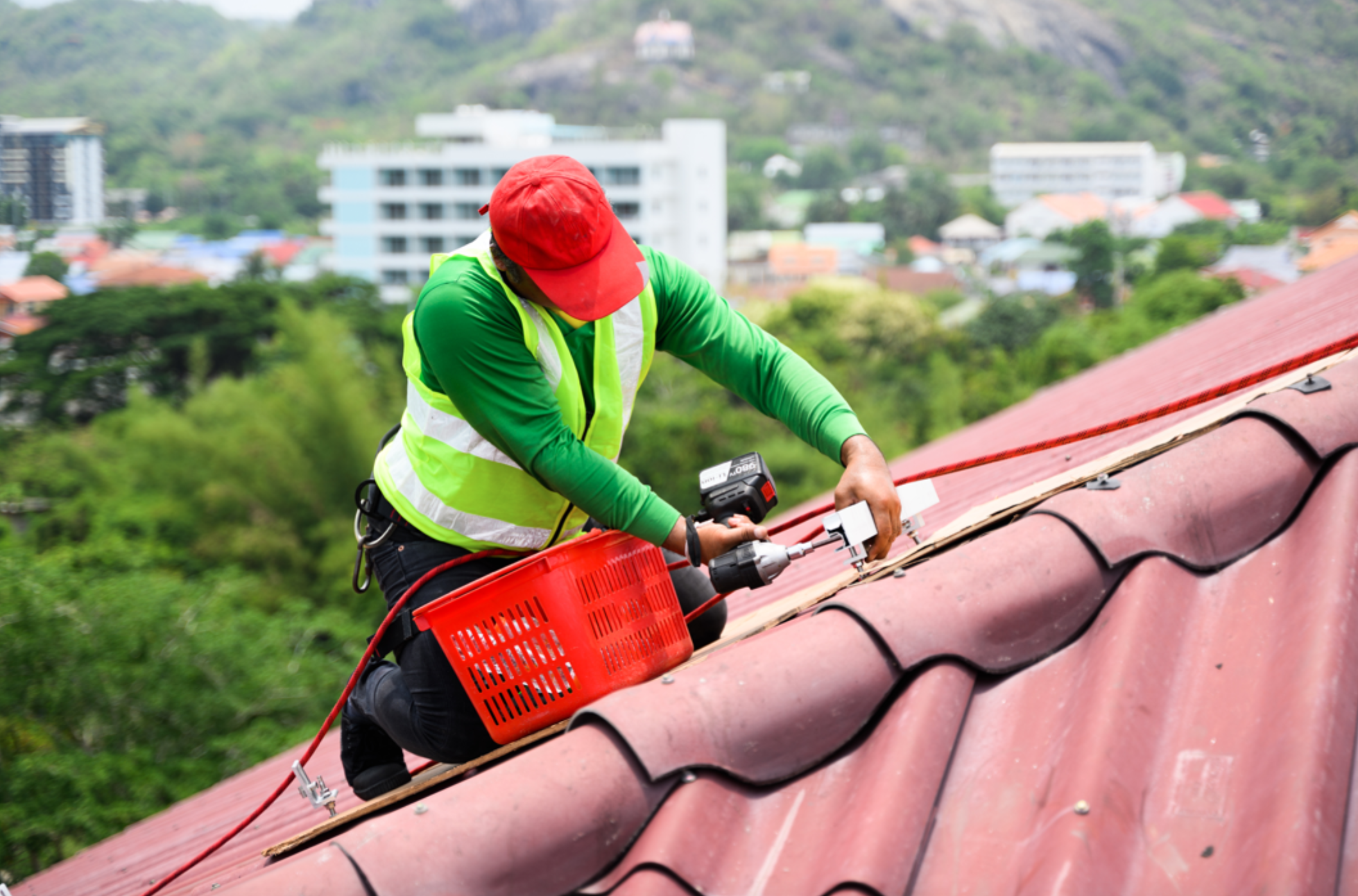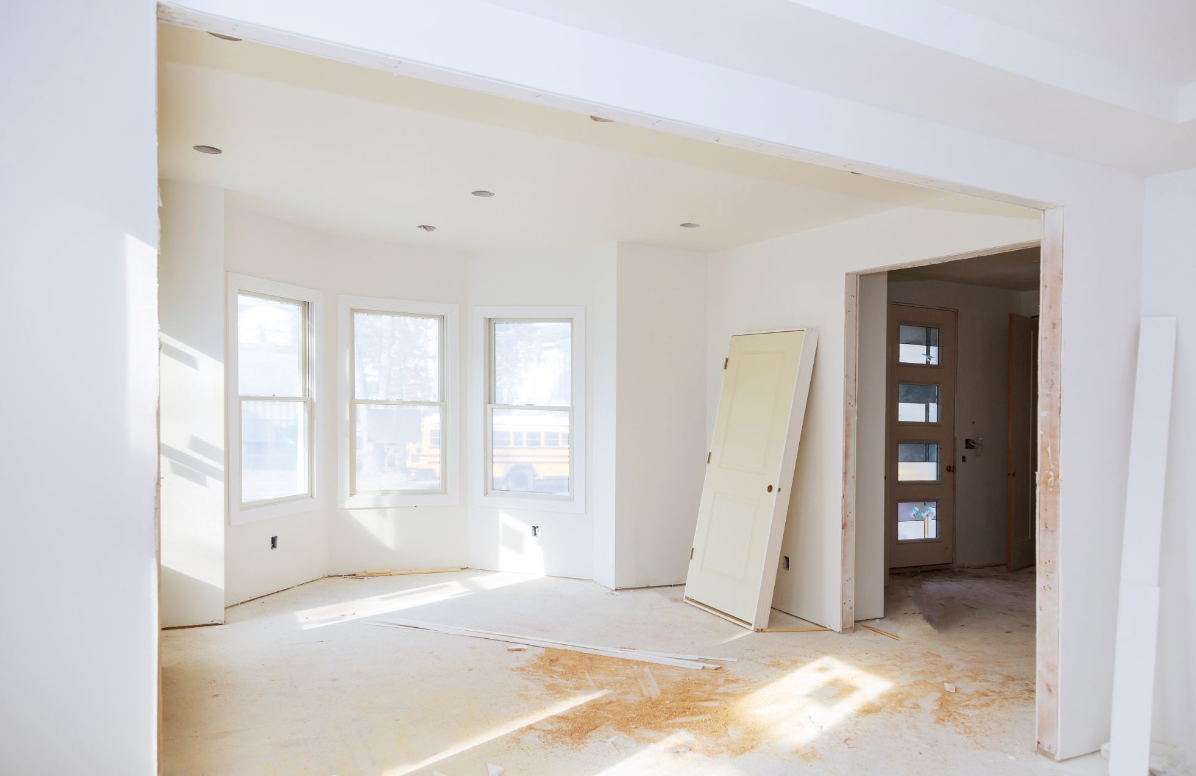What to Expect During a Roof Inspection: A Step-by-Step Guide
Getting a roof inspection can feel a bit daunting if you don't know what to expect. No worries! Here’s everything you could expect to happen during a routine roof inspection…
Initial Consultation
Your roof inspection starts with an initial chat. The inspector will ask about any concerns you have and gather some background on your roof's history. This helps them focus on specific areas that might need extra attention.
Exterior Inspection
Next up, the inspector will take a good look at the outside of your roof. They’ll be checking:
- Shingle Condition: Are any shingles missing, cracked, or curling?
- Flashing and Seals: Are the seals around chimneys and vents watertight?
- Gutters and Downspouts: Are the gutters working properly and free of clogs?
- Roof Penetrations: Are there any signs of leaks around roof projections?
Interior Inspection
The inside of your home is just as important. The inspector will head to the attic to check:
- Attic Ventilation: Is there enough airflow to prevent moisture buildup?
- Insulation: Is the insulation dry and free from mold?
- Structural Issues: Is there any damage to the roof’s framework?
Everything you need to know about roof inspection and how professionals fix common problems.
Detailed Documentation
Throughout the inspection, the inspector will take notes and photos. This documentation helps create a clear picture of your roof's condition and any issues that need addressing.
Report and Recommendations
After the inspection, you'll get a detailed report. This report includes:
- Condition Assessment: A summary of your roof’s health.
- Repair Recommendations: Specific advice on what repairs or maintenance are needed.
- Cost Estimates: An idea of how much the repairs might cost.
Follow-Up
You might have questions after reading the report, and that's perfectly normal. A follow-up meeting is a great opportunity to discuss the findings and plan any necessary repairs.
Common Roof Problems Found During Inspections
During a roof inspection, several common issues might be discovered, including:
- Leakage and Water Damage: Signs of water intrusion, such as stains on ceilings or walls.
- Mold and Mildew: Indications of mold growth in the attic or other areas.
- Sagging Roof: Structural weaknesses that cause parts of the roof to sag.
- Damaged or Missing Shingles: Shingles that need replacement to protect the roof.
How Professionals Fix These Issues
Professional roofers use various methods to address the common problems found during inspections:
Leakage and Water Damage: Professionals will locate the source of the leak and repair it, which may involve replacing damaged shingles, fixing flashing, or sealing around roof penetrations. Interior water damage will be addressed by repairing ceilings and insulation affected by the leak.
Mold and Mildew: To tackle mold and mildew, roofers ensure proper attic ventilation and may replace moldy insulation. They will also treat affected areas with mold remediation solutions to prevent future growth.
Sagging Roof: Addressing a sagging roof involves reinforcing the roof’s structural elements. This might include adding support beams or rafters to strengthen the weakened areas.
Damaged or Missing Shingles: Professionals will replace damaged or missing shingles to restore the roof’s integrity and prevent leaks. They will also check the underlying roof structure to ensure there’s no additional damage.
Book a Roof Inspection TODAY!
Regular roof inspections are key to keeping your home in top shape. They help catch small issues before they become big problems, saving you time and money in the long run.
Learn more about roof inspections or schedule your own.
What is a TPO Roof & Why is it an Excellent Choice for Flat Roofs?
Thermoplastic Olefin (TPO) roofing has become a popular choice for flat roofs due to its durability, energy efficiency, and cost-effectiveness. Here’s why…
Understanding TPO Roofing
TPO roofing is a single-ply membrane made from a blend of polypropylene and ethylene-propylene rubber. This roofing material is designed to combine the durability of rubber with the performance benefits of hot-air weldable seams. TPO roofs are typically white or light-colored, which helps reflect sunlight and reduce heat buildup inside buildings.
Key Benefits of TPO Roofing
- Energy Efficiency: TPO roofing membranes are highly reflective, which can significantly reduce cooling costs by reflecting UV rays and keeping the building cooler. This energy efficiency makes TPO an environmentally friendly option.
- Durability and Longevity: TPO roofs are resistant to dirt, mold, and punctures, making them a durable option for commercial and residential buildings. They can withstand extreme weather conditions and have a long lifespan.
- Cost-Effectiveness: Compared to other roofing materials, TPO is relatively affordable. It offers excellent performance at a lower cost, making it a cost-effective solution for flat roofs.
- Easy Installation: TPO membranes are lightweight and flexible, which makes them easier to install compared to other roofing systems. This can reduce labor costs and installation time.
- Seam Strength: The hot-air weldable seams of TPO roofing provide superior strength and durability, reducing the risk of leaks and water damage.
TPO roofing is an efficient, durable, and cost-effective solution for flat roofs.
Why TPO is Ideal for Flat Roofs
Flat roofs present unique challenges that TPO roofing can effectively address. The seamless nature of TPO membranes helps prevent water pooling and leaks, which are common issues with flat roofs. Additionally, the reflective surface of TPO roofing reduces the heat island effect, which is particularly beneficial for urban areas with flat-roofed buildings.
Environmental Impact of TPO Roofing
One of the standout features of TPO roofing is its positive impact on the environment. The energy efficiency of TPO roofs not only helps reduce energy bills but also lessens the overall carbon footprint of a building. By reflecting sunlight and minimizing heat absorption, TPO roofs help lower the demand for air conditioning, leading to less energy consumption and fewer greenhouse gas emissions.
TPO roofing materials are also often recyclable, contributing to a reduction in waste, and making buildings more sustainable.
Maintenance and Care
Maintaining a TPO roof is relatively straightforward. Regular inspections and cleaning can help extend the lifespan of the roof. It's essential to address any minor issues promptly to prevent them from becoming significant problems. TPO roofs require less maintenance compared to other roofing materials, making them a hassle-free option for building owners.
Interested in TPO Roofing?
TPO roofing is a fantastic option for flat roofs thanks to its energy efficiency, durability, and affordability. It's easy to install and can handle all kinds of weather, making it a practical and reliable choice for your roofing needs.
Learn more about TPO roofing and other roofing services.
Why a Metal Roof Could Be the Best Investment for Your DFW Home
When it's time to replace your roof, picking the right material is vital. You want something that's durable, energy-efficient, and offers good value for your money. Metal roofing is a fantastic option that ticks all these boxes and more.
Exceptional Durability and Longevity Make Metal Roofs a Wise Choice
Metal roofs are known for their incredible durability and long life span. Unlike traditional asphalt shingles, which typically last 20 to 30 years, metal roofs can last 40 to 70 years or even longer. This means you won't have to worry about replacing your roof anytime soon. Metal roofs can also handle extreme weather conditions like heavy rain, snow, high winds, and even hail, making them a reliable choice no matter where you live.
Energy Efficiency and Cost Savings
One of the standout benefits of metal roofs is their energy efficiency. They reflect solar heat, which can help keep your home cooler during the hot summer months and reduce your cooling costs by up to 25%. Many metal roofs come with special coatings that enhance their reflective properties, further boosting energy savings and reducing your environmental footprint.
Environmental Benefits of Metal Roofing
If you’re looking for an eco-friendly option, metal roofs are a great pick. They’re often made from recycled materials and are 100% recyclable at the end of their life span. This helps reduce landfill waste and conserves natural resources. Plus, because they last so long, they don’t need to be replaced as often, which means fewer materials are used over time.
Discover the long-lasting, energy-efficient, and low-maintenance benefits of metal roofs for your home.
Low Maintenance Requirements
Compared to other roofing materials, these require minimal maintenance. Metal roofs are resistant to common issues like mold, mildew, and insect infestations. Routine maintenance typically involves periodic inspections and minor repairs, ensuring that homeowners spend less time and money on upkeep. This low maintenance requirement adds to the overall cost-effectiveness of metal roofing.
Enhanced Safety Features
Safety is another significant advantage of metal roofing. Metal roofs are non-combustible, providing a high level of fire resistance. This is particularly beneficial in areas prone to wildfires. The added layer of safety can also lead to lower home insurance premiums, providing additional financial benefits to homeowners.
Aesthetic Versatility
Modern metal roofs are available in a wide range of styles, colors, and finishes. This aesthetic versatility allows homeowners to choose a look that complements their home's architectural style. Whether you prefer the sleek, contemporary appearance of standing seam panels or the classic look of metal shingles that mimic traditional roofing materials, there is a metal roofing option to suit your taste.
Increased Property Value
Investing in a metal roof can also boost your home’s resale value. Potential buyers appreciate the benefits of metal roofing, such as its durability, low maintenance, and energy efficiency. This can make your home more attractive on the market and could even help you sell it for a higher price.
Benefits of a Metal Roof at a Glance
- Durability and Longevity: Lasts 40-70 years, highly resistant to weather conditions.
- Energy Efficiency: Reflects solar heat, reduces cooling costs by up to 25%.
- Environmental Impact: Made from recycled materials, 100% recyclable.
- Low Maintenance: Resistant to mold, mildew, and insects; minimal upkeep.
- Safety: Non-combustible, high fire resistance.
- Aesthetic Options: Wide range of styles, colors, and finishes.
- Property Value: Increases home resale value, attractive to buyers.
Investing in a Metal Roof Offers Numerous Long-Term Benefits
Investing in a metal roof offers homeowners numerous benefits, including exceptional durability, energy efficiency, low maintenance, enhanced safety, aesthetic versatility, and increased property value.
Learn more about metal roofs or roof replacements.
Modern Home Remodeling Trends for Texas Homes in 2024
Could your house use a makeover? With new trends emerging like open-concept living spaces and more modern designs and pallets - it’s a great time to transform your current home into your dream house.
Here are the trends we’re seeing…
Sustainable and Eco-Friendly Materials
Homeowners are increasingly choosing sustainable materials like reclaimed wood, recycled metal, and eco-friendly insulation. These materials not only help reduce environmental impact but also offer unique aesthetic appeal, making them both beautiful and responsible choices.
Smart Home Integration
Smart home technology is becoming a staple in modern renovations. From smart thermostats and lighting systems to advanced security features, integrating these technologies enhances convenience, safety, and energy efficiency. Homeowners can control various aspects of their homes through mobile apps or voice commands, creating a seamlessly connected living environment.
Open-Concept Living Spaces
Open-concept designs continue to be popular, promoting a sense of spaciousness and better flow between different areas of the home. By removing unnecessary walls, homeowners can create larger, more versatile spaces that are perfect for both entertaining and everyday living.
The latest home remodeling trends for Texas homes in 2024 offer a blend of modern aesthetics and practical functionality.
Biophilic Design
Biophilic design incorporates natural elements into home interiors, creating a connection with nature. This trend includes features like large windows for natural light, indoor plants, and water elements. Biophilic design not only enhances aesthetic appeal but also contributes to mental well-being by creating a calming and rejuvenating environment.
Multi-Functional Spaces
With the rise of remote work, creating multi-functional spaces is essential. Rooms that can serve as home offices, gyms, or guest rooms are highly valued. Flexible furniture and thoughtful design allow these spaces to adapt to various needs, maximizing the functionality of every square foot.
Luxury Bathrooms
Transforming bathrooms into luxurious spa-like retreats is a major trend. Features such as freestanding tubs, rain showers, and high-end finishes can turn a regular bathroom into a personal oasis. This trend emphasizes relaxation and comfort, providing homeowners with a sanctuary to unwind.
Energy-Efficient Upgrades
Energy efficiency remains a priority for many homeowners. Upgrades such as solar panels, energy-efficient windows, and improved insulation not only reduce utility bills but also increase the home's value. These eco-friendly improvements are both practical and environmentally responsible.
Outdoor Living Spaces
Creating outdoor living areas that function as extensions of the indoor space is becoming increasingly popular. Outdoor kitchens, fire pits, and comfortable seating areas make outdoor spaces more usable and enjoyable. This trend encourages spending more time outdoors, enhancing the overall living experience.
Bold Colors and Patterns
While neutral tones have been popular in recent years, 2024 is seeing a shift towards bold colors and patterns. Accent walls, vibrant tiles, and statement pieces add personality and character to home designs, allowing homeowners to express their unique style.
Minimalist Design
Minimalism continues to be a favorite, focusing on clean lines, uncluttered spaces, and functional furniture. This trend emphasizes quality over quantity, creating a serene and organized living environment that is both stylish and practical.
Transform Your Home with the Latest Remodeling Trends of 2024
By incorporating these top home remodeling trends for 2024, you can create a modern, stylish, and functional living space that meets your needs and reflects your personal taste. Whether you're planning a minor update or a major renovation, staying ahead of these trends can add significant value to your property.
Ready to transform your Texas home? Let’s start building your dream house today!








